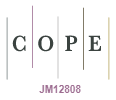Subsea well clean-up without drilling rigs: transient analysis methods to support philosophy definition
Paul Fothergill A * and Sarah Lim-Rajani AA

Paul Fothergill is a Study Manager in the Flow Assurance department at Genesis Energies. Paul has over 20 years’ experience in the energy industry. Paul holds a degree in Chemical Engineering (BEng Hons) from the University of Edinburgh, UK. Paul’s experience has primarily been in engineering consultancy, design and operations support in the upstream oil and gas industry in the UK and Australia. Paul has a successful track record of leading process and flow assurance engineering activities throughout the project lifecycle from concept through to detailed design and operations. |

Sarah Lim-Rajani is a Consultant Engineer at Genesis Energies. Sarah holds a BEng and an MSc Eng in Chemical Engineering from the University of Technology Malaysia. Sarah has over 19 years of experience in the oil and gas industry, focusing on flow assurance studies for concept select, front-end engineering and design, and detailed design development projects. Her key areas of expertise include multiphase pipeline/network modelling, hydrate management, slugging assessment, liquids management, commissioning, well start-up operational risk assessment, and development of operating strategies. |
Abstract
After a production well completion has been installed, the completion fluids, consisting of a mix of brine and oil-based muds, are removed from the well tubing by displacing the completion fluids with the production reservoir fluids to the drilling rig. This exercise is costly in terms of the additional drilling rig time and the facilities required to process and safely dispose of the completion and production fluids. An alternative strategy is to produce the completion fluids back to the host production facilities directly, removing the requirement for drilling rig for well clean-up. This paper discusses the available strategies for well clean-up, the potential risks associated with clean-up operations (the compatibility of completion fluid properties, hydrate formation and large volumes liquids). The process simulation modelling methods are described as well as how the modelling output is used to define the operating strategies for minimisation of hydrate formation probability, for managing liquid surges, and for predicting the timing and concentrations of the completion fluids and associated chemicals arriving at the host platform to inform the requirements for temporary operating equipment. This paper also presents several case studies covering different types of completion fluids and the analysis and methods that were applied to simulate well clean-up to support the development of the operational and commissioning philosophies.
Keywords: brine, completion fluids, flow assurance, hydrates, liquid surge, MEG, subsea, well clean-up, wells.
 Paul Fothergill is a Study Manager in the Flow Assurance department at Genesis Energies. Paul has over 20 years’ experience in the energy industry. Paul holds a degree in Chemical Engineering (BEng Hons) from the University of Edinburgh, UK. Paul’s experience has primarily been in engineering consultancy, design and operations support in the upstream oil and gas industry in the UK and Australia. Paul has a successful track record of leading process and flow assurance engineering activities throughout the project lifecycle from concept through to detailed design and operations. |
 Sarah Lim-Rajani is a Consultant Engineer at Genesis Energies. Sarah holds a BEng and an MSc Eng in Chemical Engineering from the University of Technology Malaysia. Sarah has over 19 years of experience in the oil and gas industry, focusing on flow assurance studies for concept select, front-end engineering and design, and detailed design development projects. Her key areas of expertise include multiphase pipeline/network modelling, hydrate management, slugging assessment, liquids management, commissioning, well start-up operational risk assessment, and development of operating strategies. |
References
Offshore Magazine (2024) Operators consider novel rig deals to limit day rates. Offshore Magazine, 25 April. Available at https://www.offshore-mag.com/rigs/article/55020784/westwood-global-energy-group-operators-consider-novel-rig-deals-to-limit-day-rates
Yan W, Kontogeorgis GM, Stenby EH (2009) ‘Application of the CPA equation of state to reservoir fluids in presence of water and polar chemicals’. Fluid Phase Equilibria 276(1), 75-85.
| Google Scholar |


